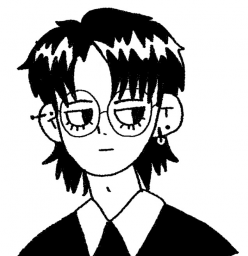Looking through the blogs of my colleagues, I noticed most of them opted for the manual script task, so when I saw Katie and Simin’s potato printings, I wanted to do the linking task on their project observations.
On Katie and Simin’s websites, they included a picture of their completed print, with a written description of their experience and process.
Katie made a colorful potato print of her dog’s name “DAiSY”
Simin made a bright yellow print of the words “Light”, with the letters “g” and “h” mirrored in the print.
Below is a brief categorization of the themes I found in their observations:
Tools
Katie used a paring knife to carve on small potatoes.
Simin used a larger carving knife that is about 5-inches long.
The difference in tool size and length definitely affected the carving experience, which in Simin’s experience was difficult to carve with precision to create legible letters.
Typography
Both of them forgot that the letters would appear in mirror image when printed, and didn’t realize it until they created the print!
This can be seen in Simin’s print, which I am glad they kept instead of correcting it, as it reflects part of the learning process.
They also noticed the symmetry and mirror-ability of some the letters, such as the “D”, “i”, “S” in Katie’s print, and “i”, “t” in Simin’s print.
Katie deliberately chose to use uppercase, whereas Simin used camel-case. With more curves and roundness in lowercase letters, it can pose as a greater challenge compared to the angular and pointed uppercase letters when carving on potatoes. Both were in san-serif fonts.
Katie mentioned it was difficult to maintain a consistent size and style, which can be illustrated through Simin’s “g” looking more like an “e” in comparison to the size of the neighboring letters.
Printing
When making the prints, Katie was able to maintain a fairly consistent spacing in the duplicate words. The only noticeable difference would be the pressure when stamping them, as seen in the uneven-ness in the “D” “A” and “S”. The paint seemed pretty consistently spread onto the stamps in a thinner layer, so the letters seemed to be a bit transparent.
Simin mentioned the sliminess of the potato made it difficult to pick up, which made the print blurry by slipping around on paper. Looking at the prints themselves, it seems like Simin’s layer of paint was thicker as well, which could also have contributed to the slipperiness.
Time
Simin’s prints took around 30 mins to complete, with most time spent on planning and cutting. Katie’s prints took around 10 mins to complete.
Both mentioned how labor-intensive and inefficient process was to create these prints manually. Katie mentioned the “perceived” value of traditional processes and how they developed a certain personal attachment to the potato stamps, knowing how much work went into it.
Connection with Readings:
“Human connection” + “Accessibility”
Katie centered her reflection of the task around “what is lost in increasing efficiency” during the mechanization of printing — mainly the connections people have with the physical medium itself. She believes that the earlier practices do not need to be completely erased in favor of new developed technologies.
Simin centered their reflection on mechanization or print “creating a base understanding of tangible language to reach beyond limited repetition”, placing emphasis on breaking down the barriers of writing as a scholar-limited tool to one that is more accessible to the masses.
I think this resonates with some of the similar sentiments I had while writing about the revival of risograph printing, in particular the “human connection” and “accessibility” aspects behind the many reasons that artist continue to use risoprint to create and distribute their artwork.
Reflection
Having been introduced to linocut and other types of printing early on, their observations reminded me of my own learning process when I first started experimenting with the method and medium, and how different our experiences were.
I first encountered printmaking in a classroom setting, therefore I had access to suitable tools and materials with a more structured learning process. I was able to fast-track onto experimenting with carving and printing technique, as I didn’t need to spend as much time trying to figure out the peripheral technicalities of the tools and materials like Katie or Simin did. However, it was through their straightforward approach through trial and error that highlighted the importance of exploration and learning through hands-on practice.
